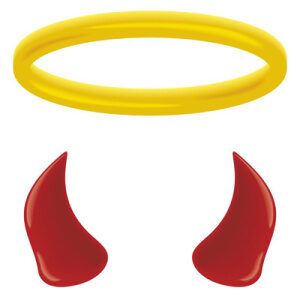By Dr. Ken Broda Bahm:

The other day after helping select a jury, I stayed in court to watch the opening statements. Happily, the side I helped delivered a tight and simple theme-based opening that centered on two big problems with other side’s conduct. When it was our opponent’s side’s turn to open their case, however, they began early with the “He’s a good guy” speech: A local boy, grew up right here, achieved a great position through hard work, and strives to serve his clients and his business partners. All great things. The problem is that neither of the two big problems that the first opening had centered on — they weren’t mentioned until more than 40 minutes into opening. And worse, to the extent that the “good guy story” had any traction, it was likely blocked by distraction as jurors waited to hear that he didn’t do anything wrong and specifically didn’t perpetuate the two big problems that my client had emphasized.
That reminded me of an important principle, and one that applies to all sides, but at the start of trial applies most immediately to the defendant giving their opening statement second: You may need to tell a general story about your client’s credibility, but don’t be premature about it. In my mind, you want to remove the horns, then install the halo. In other words, as long as the jury has a potential negative impression of your client, you need to address that impression first, before telling them about other good things your client might have done. In this post, I’ll share the “why” and “how” of this horns-first strategy.
You Might Think Front-loading Credibility Is a Good Idea
If you learned your rhetoric in a way that was aided by the ancient Greeks, you’ll know that credibility comes first. Focus on character and trust before you focus on evidence and proof. That, of course, makes sense at a general level. But I’d argue that a trial context is a unique situation, particularly for a defendant who is starting a case not with a blank canvas but with some pretty bad ink already spilled onto the picture. It may make sense to begin with a tone of “I’d like to meet my client…” but the reality is that they’ve already met – and they met in the context of the other side’s opening. So before you start to build a fresh appraisal, you may need to overturn the appraisal they have already formed.
You May Need a “Credibility Repair” First
If the first opening has done a good job, or in some cases, if the attorneys’ oral voir dire has done a good job, then the jurors may already have some specific concerns about your client ringing in their heads as you head to the lectern. Before moving into your proof, and before launching your attacks on the other side, you may need to start with what I’ve called a credibility repair — a moment or two at the start of your opening to address those negatives that are top-of-mind, and likely to prevent your jurors from paying full and honest attention until they’ve been addressed. In short, assume that jurors are not ready to hear your main case until you’ve dealt with the reasons for distrust that the other side has implanted.
The Broader Point: Treat Jurors as Purposeful Listeners, not as Repositories
If jurors just received information, stored it, and analyzed it all at the end of the trial, the order of presentation wouldn’t be a problem. But they aren’t tape recorders. They are listening purposefully at all moments. At the start of opening statement, particularly for the second at bat, they are thinking, “Is the plaintiff right?” The earlier your convincing “No,” can come, the more jurors will be able to able to focus on all of your information, including the “good guy story.” You can’t be a mind reader, but trying to track with what jurors reasonably might be thinking at any given time will make you a better persuader.
Going back to my example from the other day, it would have been far better strategically for our opponents to have had the flexibility start out their opening with something like this:
You know, the other side spent all their time on just two points. Let me deal with those points first, then I will tell you there is a lot more to consider in this case.
____________________
Other Posts on Credibility:
- Face It: Masks Don’t Hinder Credibility Assessment
- Treat Your Credibility as Central, Not Peripheral
- Experts: Complete the Credibility Checklist
____________________